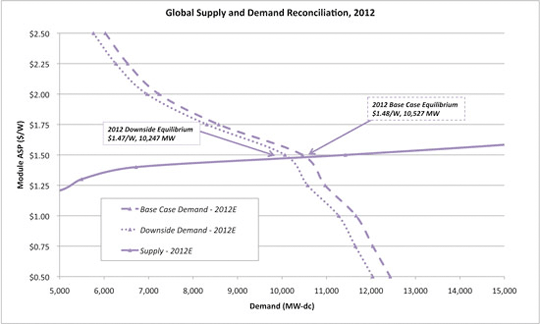The Anatomy Of A Pass A Quantitative Analysis On Why A VC Passes
Post on: 16 Март, 2015 No Comment

Thumbnails On Firefoxs New Tab Page Could Expose Your Private Data, Fix Coming Soon
It is an exciting time for early stage technology company building and venture capital. Despite some early bumps in Facebook’s recent IPO (my thoughts here ), we are seeing something of a return in the IPO market, as Facebook, LinkedIn. Groupon. Zynga. Jive and others have gone out. On the company formation side, founder momentum seems to be surging. Every week, I learn about about new incubators and startup accelerators getting formed.
Applications are surging to top tier incubators Y Combinator. 500Startups. and TechStars. To be sure, it is an exciting time.
And in this industry, whenever the times are exciting, the storylines and hype cycles start spinning up the siren song that startups are easy. If all one did was read top tech blogs, you might think that financings materialized out of nowhere, that valuations were getting bid to crazy levels. And certainly, for some very small number of exceptionally exciting companies, fund-raising happens in a snap. But it’s not the standard. The problem with this siren song is simple. It makes raising money, much less building a company out of nothing, sound easy.
That’s ridonculous. No matter how robust the current market might be, for the vast majority of early stage companies the core reality is that raising money is hard, if not extremely hard. And no matter how hard the fund-raising function is, it pales in comparison to the task of actually building a lasting, impactful company.
To support my argument, and ideally more importantly, to serve founding teams planning on fund-raising, I’ve completed a detailed study analyzing every pitch I have heard since the beginning of March 2011. This analysis attempts to quantify my rationale for why I chose to pass or to invest in a company.
I’m calling this analysis The Anatomy of a Pass, a Quantitative Analysis on Why a VC Passes. Why this title? First, the pass is a much more common outcome for any founding team pitching an investor. Hopefully understanding with some level of quantitative analysis what drives this result will help founders. Second, I’m specifically relating the title of this work to Brendan Baker’s most excellent and useful “the Anatomy of Seed: An inside look at a $1M seed round .” His work and his thinking are terrific.
A final note: I apologize if this comes across as overly negative. I’m a venture investor, which means that the glass is always more than half full. I am insanely fortunate to have a role in this great industry. I put this together not to critique those who put themselves out there. It’s meant purely in a spirit of sharing data and analysis.
For my analysis, I considered any company I met with for a pitch in person or by phone from March 1, 2011 through May 31, 2012. I did not include cold calls, unsolicited business plans, brief meetings with founders looking for advice, or catching up with a founder over a beer, unless we met for a pitch later. Also I did not include all companies who pitched at Demo Days at incubators or startup competitions, but I did include any company from those pitches where I had follow-up meetings. This gave me a sample size well above 200.
I then rated each company on a 5 point scale (5 is high, 1 is low) across 5 core dimensions:
For information on how I built and defined the grading scale, I’ve posted that here. (From this link, I’ll also post pointers to much of the raw anonymized data.)
I then ran quantitative analysis on this data, seeking to understand the weighting and interplay of Market, Team, Traction, and Product on the likelihood of receiving a Term Sheet. As a cross-check, I also forced myself at a qualitative level to summarize in 10 words or less why I made each decision.
Here’s what I found in a first-order analysis of the data:
- 2% of companies pitching me get an agreement for a term sheet for investment. Note that a term sheet does not always result in a closed investment from us. I don’t win them all, sadly.
- 50% of companies were pitching mobile-centric or mobile-first offerings, which maps to our core focus area as investors at BlueRun.
- 100% of companies pitching me that received an agreement for a term sheet for investment were pitching mobile-centric or mobile-first offerings.

The table above expresses an equation# that can be rewritten like this:
Likelihood of Receiving Term Sheet = -0.355 + 0.349 (Team) + 0.334 (Market) + 0.222 (Traction) + 0.029 (Product)
What this says, in essence is that if you wanted to predict with some likelihood whether a company was going to get a term sheet, from me at least, you could use this function.
So getting rid of the stats-speak, what’s all this mean? I think it suggests a few things, though again it’s not definitive…
- Team and Market are by far the two most important factors in gaining a term sheet. Investors often say “we invest in teams.” Certainly, teams are really important. But I think teams attacking big, ambitious, fire-breathers of a market are even more important. I think this regression, where the Team and Market coefficients are so much more heavily weighted than the others, reinforces this. To really drive the likelihood of receiving a term sheet, you want to optimize for Team and Market. Another point to support this: when I summarize each company pitch that I passed on, the most common response I wrote was “questionable market opportunity,” which again speaks to Market.
- Traction speaks louder than words. After Team and Market, Traction is the next most important factor to driving towards a term sheet. In fact, it’s 7 times more valuable than Product at least in this equation. My interpretation of this finding is that Traction is a reality-maker. Great Traction showcases evidence of a great Product. Great Traction also helps validate the Team. And weak Traction undermines whatever exciting demo or product plans might exist.
- Investments in pre-product companies happens… with great Teams focused on great Markets. This is not obvious from looking at the data, but if I look at those companies that scored the highest on Likelihood of Term Sheet, not all had high Product or Traction scores. Some had nothing more than prototypes or ideas of prototypes, and a Seed investment seemed appropriate. All however had very high scores on Team and Market.
- Investor fit matters a lot. Our firm, BlueRun Ventures. has been deeply focused on mobile for years, and we aspire to be the very best of mobile-centric investors. We talk a lot about this being our focus. Our actions back up our words: every company I’ve agreed to invest in was also focused on services that were mobile-centric. Fit matters.
To wrap this up, no matter how hot venture financing gets, fund-raising is and always is pretty hard for most founding teams. Of the more than 200 companies I analyzed, fewer than 2% scored a term sheet from us. And keep in mind, those 200 are a small subset of the total number of companies that are trying to get onto the calendar to pitch. My friend and super entrepreneur, Danny Shader, has a great saying which I’ll cite now: “Welcome to the NFL.” It’s hard. And of course, if you think raising money is hard, try building a company.
As an attempt to help demystify what makes fund-raising hard, I am providing this analysis. My hope is that this transparency and open sharing of data can be useful, and for those data geeks among us, entertaining. ☺ Happy hunting, and if the community finds this useful, I’ll be happy to track and update this over time.














